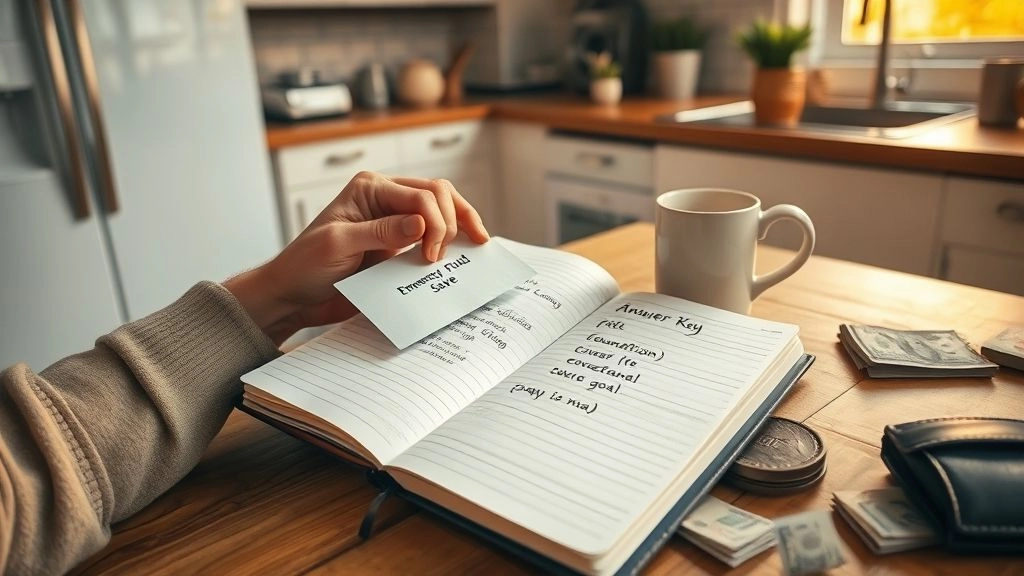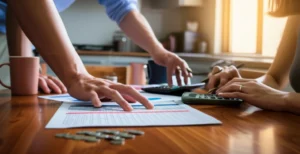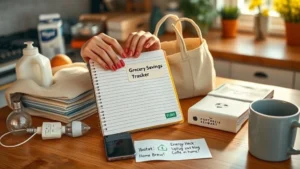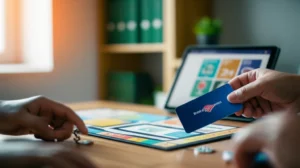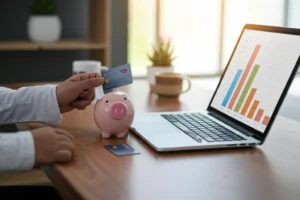Ever Wonder Where Your Money Goes?
Okay, tell me if this rings a bell… Payday hits. You feel rich—if only for a moment. By Monday, that “flush” feeling is gone and you’re back to puzzling over how your bank balance evaporated so fast. (Been there. Too many times to count.) Money—it slips through our fingers when we’re not looking, like socks in the dryer. But what if it didn’t have to be that way?
I want to talk about the little shifts—the almost invisible choices—that build a financial life you can actually feel good about. Not the intimidating, “Become a billionaire in 30 days!” stuff you see everywhere. Nope. This is about building real habits that stick. At the heart of this change? The first foundation is save answer key. I promise, it’s not as hard—or joyless—as you think.
Why Bother with Basics?
Isn’t Saving Only for Rich People?
Let’s smash that myth right up front. Saving is for literally everyone (even if you’re just starting out, even if ramen is on your menu tonight). I used to think saving was for people with “extra.” Spoiler: If you wait until you feel like you have “extra,” you’ll be waiting a long, long time.
You know that saying about building your house on a rock, not sand? Finance works the same way. And the first foundation is save answer key—it’s the rock. Doesn’t have to be fancy. Just sturdy. For me, it started with a goal of a $500 emergency fund. There’s something magic about knowing you’ve got a cushion if—let’s say—your old car decides its time is up (RIP to my 1998 Corolla, gone but not forgotten).
Actually, there’s even research on spending habits and kids’ money education that shows these basics, if started early, stick for life (thanks, LearnBright). But honestly… it’s never too late to start being the “responsible” one. And it doesn’t have to be boring. Let’s keep it real: sometimes being frugal means being a little sneaky with your excitement because your friends might not “get it” yet. That’s okay. They’ll catch on.
How Do I Actually Start?
Start small. Like absurdly small. Look, I used to think $10 wouldn’t make a difference, but here’s what changed my mind: One month, I started a “lunch swap” challenge with a buddy. Instead of eating out twice a week, we brought sandwiches and pocketed the $16 each time. At the end of the month? $64. Next month, I sent that $64 straight to savings… like paying future-me, not Starbucks.
Quick Wins: Build That $500 Buffer
| Panic Mode | Peace of Mind | |
|---|---|---|
| Flat Tire | Stress. Scramble for cash. | Pull from savings, fix, move on. |
| Missed Paycheck | Panic. Late bills. Dread calls. | Use emergency fund. Breathe easy. |
Try this: automate $10 a week into your “untouchable” savings. You won’t even feel it. Before you know it, you’ll hit that “first $500” milestone and realize, “Hey… I can do this.”
Want some extra motivation? I recommend peeking at The first foundation is save answers for some seriously approachable ideas. (You’ll notice none of them require giving up every joy in life.)
Debt Traps & Sneaky Fees
What Happens If I Slip Up?
Let me ask: Ever paid a bill late? Ugh… I have. That sinking feeling when you realize you missed a payment—it’s like tripping over thin air. And the kicker? if you make a late credit payment, you might see the lender add a late fee, and sometimes jack up your interest rate. (Double ouch.)
No judgment here. Everyone messes up a bill now and then. But these little “forgotten bills” can grow into bigger problems if you let them. That’s why step two, the often-overlooked hero, is The Second Foundation Get out of debt and keep your sanity. Because once debt is whispering in your ear, it never shuts up until you handle it.
How to Spot Red Flags in Your Budget
- Are you buying “wants” when your “needs” aren’t fully covered? (Guilty. My “need” for new plants vs. my actual need for groceries…)
- When was the last time you looked at your auto-payments? Sometimes, those $4.99 subscriptions are lurking, draining you dry.
- Ever feel like your money is gone but you can’t remember where it went? Welcome to Overspending Anonymous.
Try this mini-project: Next time you get your paycheck, immediately set aside a slice—just a sliver, $10 or $20—before you do anything else. This is the “pay yourself first” trick, and it totally changed my mood about saving. (Suddenly it wasn’t “extra money I’ll probably spend”—it’s “future pizza money in a pinch.”)
Debt Repayment—Which Way to Go?
This is where things can feel overwhelming. Debt piles up, and you wonder which bill to tackle first. There are two main schools of thought:
| Method | How It Works | Why Try It? |
|---|---|---|
| Debt Snowball | Pay off smallest debt first; get quick wins. | Makes you feel like a rockstar sooner. |
| Debt Avalanche | Target high-interest debt first; save more money overall. | Cuts down total interest paid. (Math nerds rejoice.) |
Here’s what happened when I switched to the snowball: My first “paid off” credit card (balance: $140) made me want to do a little victory dance in my living room. That tiny success spilled over to tackling the bigger debts. The math said “avalanche” was better, but emotionally? The snowball made me actually stick with it. What about you—are you a quick wins person or an “optimize everything” kind?
Moving Past “Just Getting By”
But What If I Want More Than Surviving?
Right? Surviving is awesome, don’t get me wrong. But sometimes you want to do more than keep your head above water. What then? That’s when you start seeing savings as a trampoline, not just a safety net. It’s the launchpad to the really good stuff—travel, generosity, or building something bigger than yourself. Ever heard of the fifth step (the fifth foundation: build wealth and be outrageously generous)? It sounds audacious, but hey, once the basics become part of your muscle memory, the next leap isn’t as wild as it seemed on day one.
I used to think investing and wealth building were for people who “knew a guy,” but nope. It can be dead simple at first. Open a high-yield savings account and pop your emergency fund in there. (Hello, 4% APY! That’s like your money getting a tiny, legal raise each month.)
Once the basics are set, pick a number—maybe $25/month—and start learning about index funds or low-risk investing. Even if you don’t do anything fancy, watching your nest egg grow (even a little) is like a magic trick. Your money is working when you’re not.
Easy Ways to Level Up
- Automate savings to a separate “Investment” account you can’t touch by accident.
- Download one of those round-up apps and stash the spare change. Sneaky but effective.
- Use a side-hustle “paycheck” to try something new—crypto, stocks, or even just a community CD. (Nothing riskier than your comfort zone.)
If you want practical how-tos, honestly, The first foundation is save answers is full of gems (and zero intimidation). You can dip your toe in without feeling like you’re signing up for a finance class. Same with The Second Foundation Get out of debt and—they make the steps doable.
Story Time: From Broke to Builder
Let me introduce you to my friend, Jamie. Three years ago, he had $38 in his checking account and a car that made weird noises. He started with a simple $5-per-week “untouchable” savings. Next, he put every cash birthday gift into his new “dream fund.” Fast-forward: he took a side gig dog-walking, paid off two credit cards using the snowball, and now has a five-figure savings balance.
He told me the wildest change wasn’t his account balance—it was the way he stopped panicking at every little hiccup. “I finally felt like I was the boss of my money, not the other way around.” I’m stealing that line… because yes.
Real Talk: One Tiny Habit at a Time
Could This Actually Work for Me?
Let’s get honest. Most life changes don’t happen in the grand gestures. Nope—it’s the accumulation of tiny decisions, even when you aren’t in the mood. That’s the secret to making the first foundation is save answer key work for you. Not a lifestyle overhaul. Just… tweaks. One sandwich, one skipped latte, one “autopilot” savings transfer at a time.
Listen, sometimes I still make budgeting mistakes. Sometimes an Amazon box shows up and I have no memory of ordering it (whoops). But building these habits means one mistake doesn’t throw off my month. I can bounce back—and you can, too.
Final Thoughts: You Can Totally Do This
I hope this shy, slightly-messy guide gave you actual hope—like, “wait, maybe I really can build a money life that works for me.” The rock-solid core? The first foundation is save answer key. Automate that first step. Embrace that you’ll mess up sometimes. Celebrate the tiny wins—like when you resist buying something just because it’s “on sale” (curse you, clearance aisle). Let yourself get curious. Poke around resources like The first foundation is save answers or see what happens if if you make a late credit payment, you might see the lender add sneaky fees. Then—take action, as small as it may be.
Your future self is going to thank you. (Maybe even buy you dinner with that emergency fund money you almost spent on another candle you don’t need. Mine did!) So, what do you think… what’s the very next tweak you’ll make to your money routine? Let me know—I’ll be cheering you on from this side of the screen.

